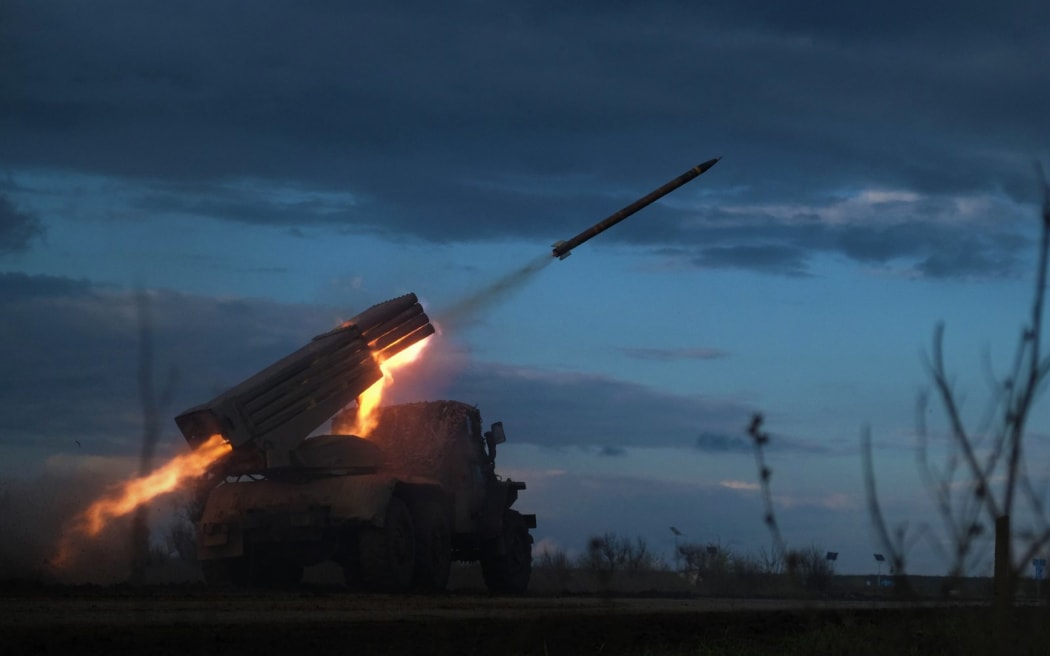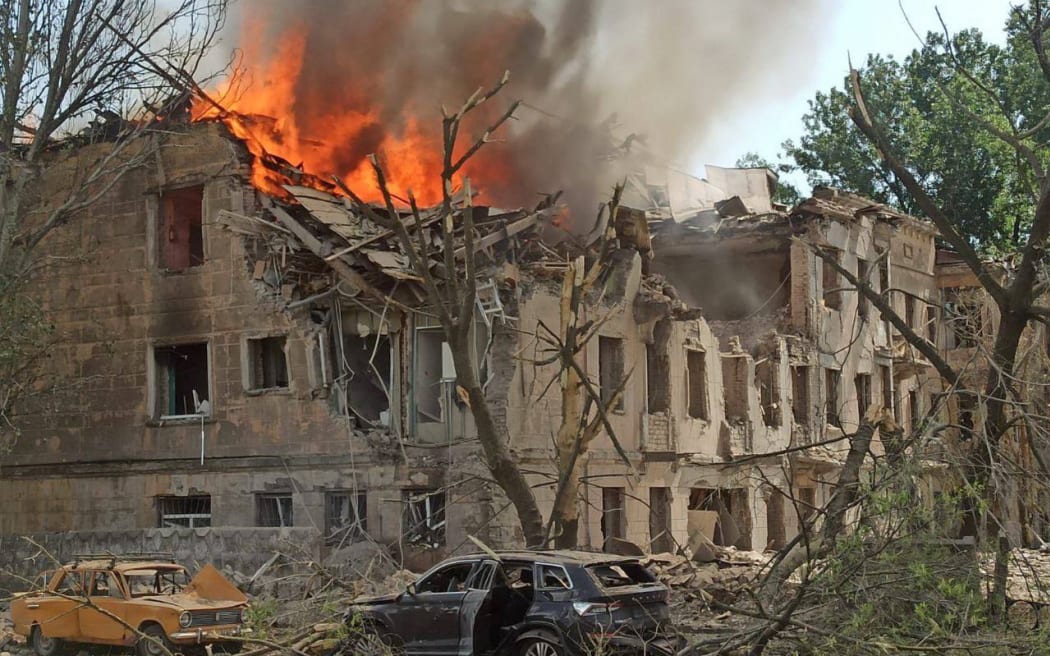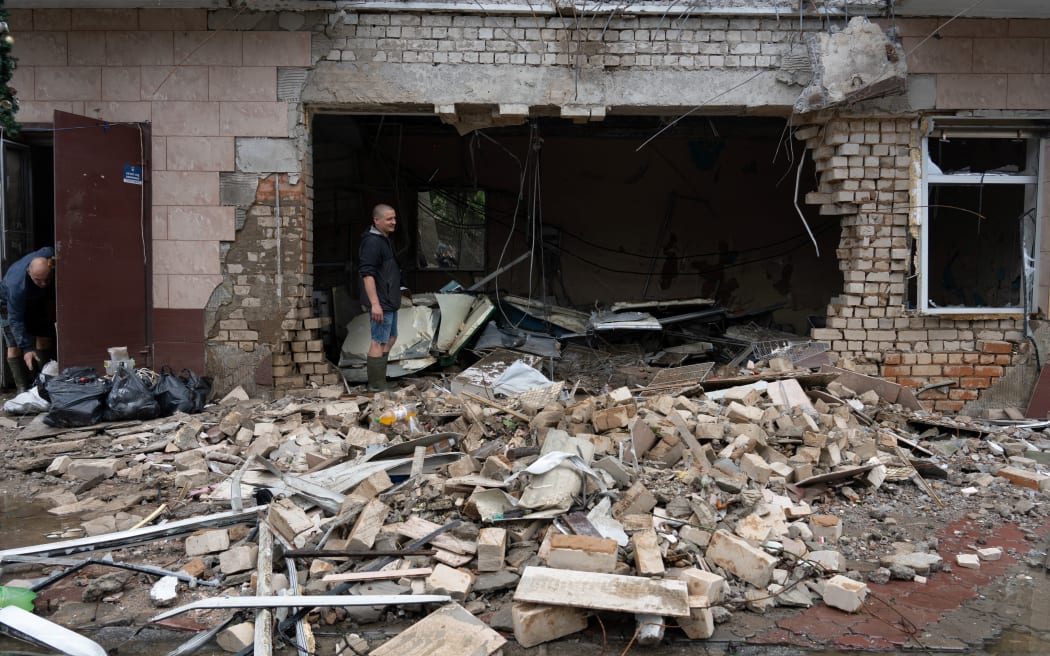The three ways Ukraine's counter-offensive can go

by Andrew Harding in eastern Ukraine for BBC News
As the anaesthetic began to wear off, the Ukrainian soldier - a scrawny, mud-flecked 19-year-old - let out a low wail in the back of the ambulance, then fumbled with his oxygen mask and swore as he mumbled: "Give me my rifle."
"They're often like this. So much trauma," said Dr Inna Dymitr, stroking the soldier's pale face as he slipped back into unconsciousness and the ambulance swerved, at furious speed, heading away from the frontlines south-east of Zaporizhzhia.
The young soldier's name was Oleh. In a trench that morning, shrapnel from an exploding Russian mortar had dug a large hole in his lower back, quite possibly severing his spinal cord.
"He's stable, but in a serious condition. We get so many like him," said Dr Dymitr, listing half a dozen other cases from recent days. She works for a private, Western-funded aid group, MOAS.
As the casualties from Ukraine's counter-offensive mount, it is easy to see why - on a rare visit to this closely guarded section of the southern front - some soldiers and observers are starting to wonder if a breakthrough is possible, or whether Russia's defensive lines, built up and heavily-reinforced over the winter months, are simply too much of a barrier.
"Without more [Western] help, I think we might lose this game," said Kyrylo Potras, a Ukrainian marine whose lower left leg was torn off by a Russian mine in 2020, but who has now returned to the frontlines. Potras said the presence of vast Russian minefields was proving a huge obstacle.
"These Russians… there are a lot [of them]. They have many anti-tank guns and missile systems," he said.
And yet, one month into this long-planned counter-attack, there are plenty of soldiers and experts who vehemently disagree, judging that the opening phase is going according to plan, and that the active frontline - which stretches in a rough arc for more than 1,000km (620 miles) from the Black Sea Coast up to Ukraine's north-eastern border with Russia - was never going to be breached with the same abrupt speed that Kyiv's forces achieved last year.

Having spent the last few weeks visiting three separate sections of the front and talking to a range of people, I'm tempted to divide these differing perspectives into three broad groups: those who see Russia's defensive lines as if they're made of tin, those who see them as wood, and those who imagine them as glass.
The tin theory - malleable but resilient - was first sketched out for me, more than two weeks ago, by a weary medic I met at a field hospital close to the near-obliterated Donbas town of Bakhmut.
Amidst the crash and boom of artillery fire, he described Ukraine's mounting casualties, warned that Russia had had too long to prepare its defences and had too many troops, and concluded that while Ukraine might be able to push the frontline back, perhaps even by tens of kilometres, it would struggle to do more than dent Russia's over-all strategic hold of east and south-eastern Ukraine.
"I think this war will not be resolved in the battlefield. It will end with a political deal," he said gloomily.
The wood theory - by which I mean a frontline more likely to snap and splinter, but not collapse - was brought home to me some three hours' drive southwest of Bakhmut, beyond the small town of Velyka Novosilka.
In the fields and rolling hills that stretch towards the Black Sea, Ukrainian forces were pushing forwards, finding ways through the minefields and attacking Russian positions from unexpected angles, and - slowly, but steadily - capturing significant chunks of territory and several villages and small towns.
"I'm a realist, although some people call me a pessimist," said Artem, a 36-year-old soldier, as a Ukrainian jet roared overhead. His view was that Russian troop morale was low, and that Ukraine was likely to make some significant breakthroughs in the coming months. But he could not see the counter-offensive turning into a rout, like it briefly did last November.
"The media and society are in a hurry. [But] the worst option is always possible," he added, wondering what sort of "price" Ukraine would be prepared to make in terms of the likely casualties involved forcing a strategic break in Russia's frontlines.
It is notable that the gloomier perspectives regarding Ukraine's counter-offensive tend to come from soldiers closest to the frontlines and most heavily involved in combat operations.
You could argue that they have the most experience and the most realistic views. But it is also reasonable to point out that these soldiers are least able to see the bigger picture, focused, as they are, on small sections of a huge military operation.

Which brings me to the glass theory: the view - widely held by prominent western military analysts like Mick Ryan and generals like UK Armed Forces chief Sir Tony Radakin - that the counter-offensive is on course and that in weeks, or months, Russia's defences will shatter, allowing Ukraine to seize strategically significant territory and to advance close to (if not into) the Crimean Peninsular.
This theory's supporters urge patience, not pessimism, arguing that Ukraine's lack of airpower means it cannot do the vital early work of destroying Russia's "operational system" - meaning its logistical supply-lines and command centres - with the speed it would like.
Instead, Ukrainian forces are using ground-based missiles to do the work, and at the same time attacking Russian positions in as many places as possible in order to tie up, and destroy, as much enemy manpower and equipment as possible.
"Starve, stretch and strike," was how Sir Tony, Britain's Chief of Defence Staff, described the strategy in parliament this week, concluding that Russia has already "lost nearly half the combat effectiveness of its army."
In another field hospital - where Oleh, the 19-year-old soldier with a severe back injury had briefly been patched up by medics before getting an ambulance ride to Zaporizhzhia - a Ukrainian doctor who asked that we use only his first name, Yevhen, summed up what I would still describe as the dominant, and optimistic, mood of most Ukrainian soldiers and officials I've met here.
"Everyone is waiting for [the breakthrough]. We believe and wait. We know everything will be fine. We just need to be patient," he said with a smile, sitting in the sunshine outside the well-organised field hospital, with the boom of outgoing artillery rounds echoing in the distance.
- BBC